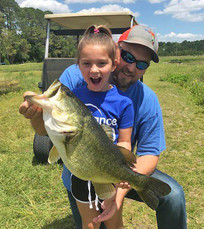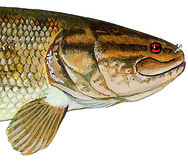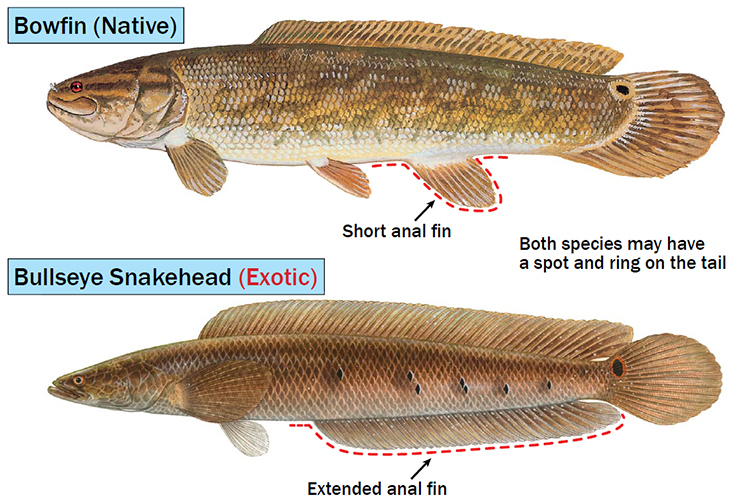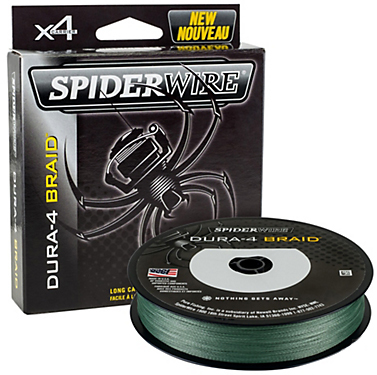
TrophyCatch Season 7 saw a productive spawning period with many of the year's biggest submissions, including the current season leader — Brian Hammett's 15 lbs. 13 oz. monster caught in Orange Lake! This fish is especially significant as the second-largest bass ever submitted to TrophyCatch, after Dominic Montalto's 16 lbs. 12 oz. giant from 2017. A TrophyCatch requirement is that all submitted bass must be live released, and it is amazing to think that either of these fish could be caught again — maybe by you, and at an even bigger size! Florida is truly the Bass Fishing Capital of the World!
|

To date in Season 7 (which runs October 1, 2018 to September 30, 2019) the program has approved:
- 537 Lunker Club (8 - 9.9 lbs.) bass
- 165 Trophy Club (10 - 12.9 lbs.) bass
- 10 Hall of Fame (13+ lbs.) bass
One of the more interesting recent participants was Katherine Dotson — daughter of one of our FWC biologists — who caught this 10 lbs. 4 oz. monster bass in a University of Florida Fishing for Success pond in Alachua County! At 7 years old she is the youngest Trophy Club category participant to date, and one of the program's youngest contributors ever.
TrophyCatch has now approved 8,779 bass submissions since its start in 2012 — a large amount of data that is being used for bass management and conservation, fisheries enhancement, and promotion of bass fishing. Thanks to our participants of all ages who have contributed to the future of bass fishing!
Even if you haven't caught a trophy yet, just registering for TrophyCatch shows our program partners your support, and also automatically enters you into a free drawing for a Phoenix bass boat — and you don't have to submit a fish to win. Check the TrophyCatch website for submission guidelines and prizing.
|

Size: The state record is 19.00 pounds. The Big Catch minimum qualifying sizes are 8 pounds or 28 inches for adults, and 6 pounds or 21 inches for youth (BigCatchFlorida.com).
Identification and similar species: The bowfin is also known as "cypress trout" or, much less glamorously, "mudfish". This species has a long, stout body; big mouth with small, sharp teeth; long dorsal fin and rounded tail fin. Males have a dark spot with a bright orange halo on the tail fin. The spot is absent or inconspicuous on females. In southeast Florida this fish is sometimes mistaken for the bullseye snakehead, but can be easily told apart if you know what to look for: the bowfin has a short anal fin.
|
 |
Angling qualities: Most bowfin are landed by anglers trying to catch something else! Bass anglers are often surprised to find a bowfin has taken their lure — but may be equally surprised to discover that the lowly "mudfish" can put up a good fight. But don’t lip this fish when landing it! Remember that its mouth is loaded with sharp teeth. Bowfin will strike topwater and minnow-imitating lures but are most often caught on live bait such as shiners. Food quality is considered poor; the flesh is quite soft, but can be prepared smoked, fried as patties or stewed. In Louisiana the fish has been harvested commercially for caviar.
Where to catch them: Bowfin are common in freshwater marshes or backwaters of lowland streams throughout Florida, as well as south Florida's canal systems. They can survive well in warm, poorly oxygenated waters; the bowfin has an air-bladder that functions like a lung and can sometimes be seen gulping air.
Interesting facts: Males clear a nest among heavy vegetation. Eggs are laid at night and males guard them. Larvae use an adhesive organ to anchor themselves.
Fish illustrations by Duane Raver, Jr. and Diane Rome Peebles.

In Issue 14 we highlighted modern braided lines. Incredibly thin and strong compared to monofilament, braids like Spiderwire and other brands are a fishing game-changer! We continue our look in this issue.
Despite its limpness, an advantage of braid in most situations is the fact that it has almost no stretch. Monofilament is quite stretchy, evident to any angler who’s ever had to break a mono line off a submerged stump. Braid, on the other hand, is tight as a wire — great for strike detection and solid hook-sets. With no stretch, however, braid can be less forgiving when fighting a big fish compared to monofilament, though the extra strength of braid helps offset that potential disadvantage.
If you are new to braid, know that none of your old monofilament line knots will work. Make sure you check that little folded paper that falls out of the box when you open your new line to see which knots the manufacturer recommends for its brand — they can vary. Fortunately, one of the easiest knots, the Palomar, works pretty universally among the various brands of braid. It does waste a bit more line compared to the improved clinch knot, though you will probably not need to re-tie nearly as often when using abrasion-resistant braids than you do with mono. Note that when your knot or line shows fraying, it’s time for a re-tie.
|
 The Palomar knot is easy to tie and works with nearly all braided lines.
Spin fisherman in particular will appreciate the benefits of thin but strong braided lines. For baitcasting gear, some of the features of braided lines such as limpness and small diameter make less of a difference, despite the fact that many of the earlier superbraids were designed (and advertised) with baitcasting in mind. However, most of what’s written here will apply equally to both gear types, and most modern braids work well with both spinning and baitcasting rigs.

Know that these new braids are tough, and you will need to invest a few dollars in a small pair of scissors or clippers designed especially for braided lines to toss in the bottom of your tackle box.
|

And speaking of cutting, one thing to be cautious of is the fact that these super-slick braids can cut your hands much more readily than softer monofilament. If you snag a submerged stump, don’t try to pull your lure free or break the line off with your hand! Wind some of the line around something like a net handle for heavy pulling. Try to keep this in mind during the excitement of landing a large fish, as well — don’t grab the braid or wrap it around your hand.
|

Reader Tip: The Florida Freshwater Angler reader Jules S. says: "I have been using braid for many years, but have experienced many “wind” knots. You must get to the knot before it gets pulled tight! I pin a small safety pin to my hat, and most of the time I can use the small pin to get into the knot and untangle it."
|
One of the few disadvantages of braid is that it is not transparent like monofilament, although most anglers don’t notice a drop in strikes when switching between the two. Those that want to offset this disadvantage of braid usually add a monofilament or fluorocarbon leader. The leader is usually at least two to three feet, longer for ultra-clear water or especially wary fish. Mono is cheaper and works, but fluorocarbon is another modern wonder material that’s practically invisible underwater and has outstanding abrasion resistance. The chief disadvantage of fluorocarbon is cost — more than that of most premium braids — but not as hard on the wallet if you’re only buying a small spool for leader material instead of a full spool.
So that’s the “skinny” on braid. Monofilament will probably still have a place on your rod rack, but for heavyweight fishing on gear that still casts and feels light in your hands, braid can’t be beat!
Fish are a diverse group of animals! They come in all shapes and sizes, based on their lifestyle and ecology. Does the fish hover in a placid lake, or constantly swim to hold position in a swift river? Does it eat vegetation, or does it feed on minnows? Does that minnow eater ambush its prey at close range, or chase it down from a distance with a long dash? You don't need to know all those details to try to identify the fish below from their shapes! But be aware that each distinctive shape has a specific purpose that matches the fish to its environment. Answers are at the bottom of the newsletter.
To contact the Florida Freshwater Angler, email John Cimbaro.
Fish illustrations modified from Duane Raver, Jr.
Answers to fish quiz: (1) Sunfish (most are similar in shape) (2) Warmouth (the large mouth is the give-away) (3) Striped, white, or sunshine bass (4) Pickerel (5) Crappie (6) Largemouth bass.
|